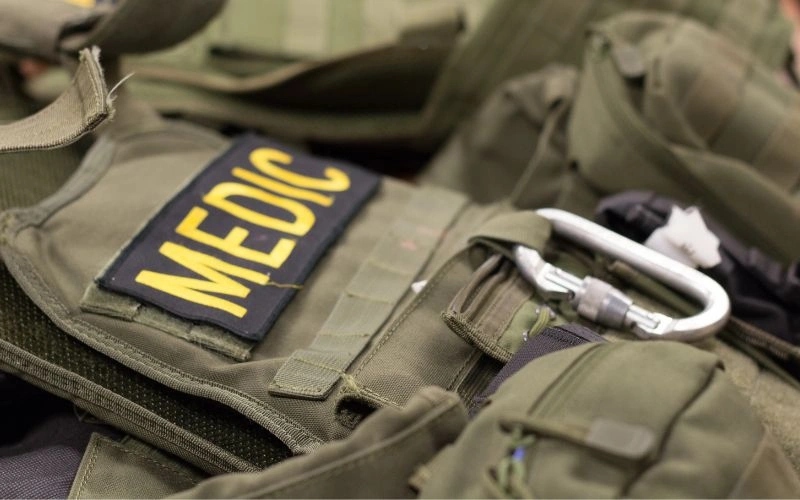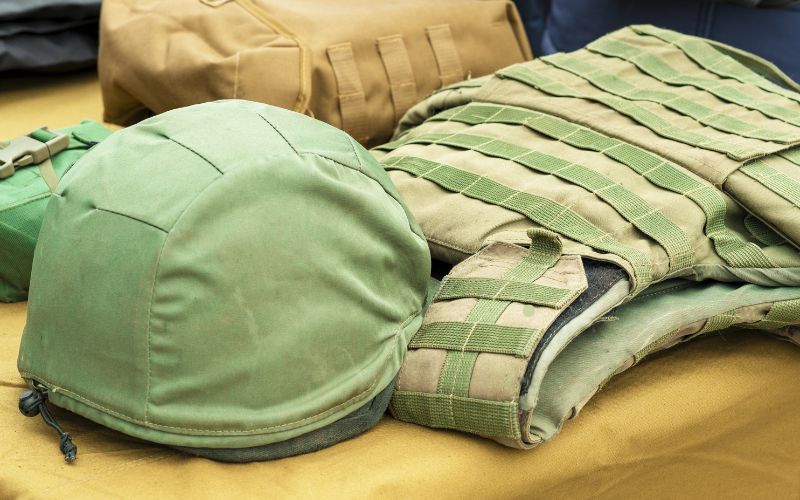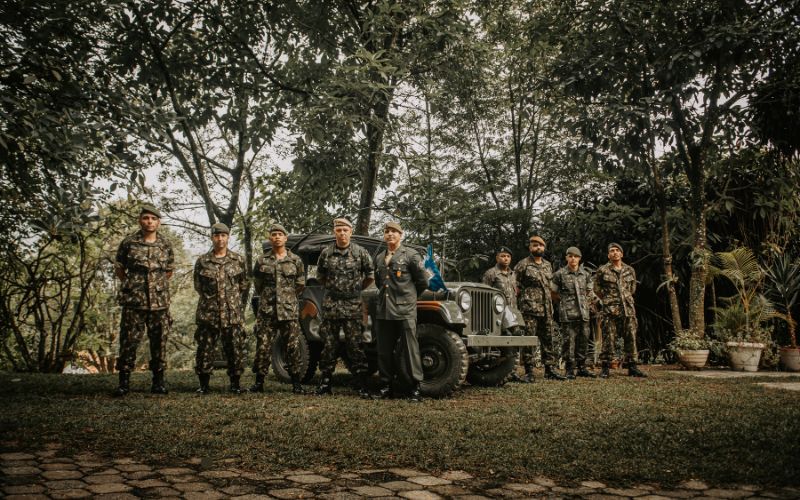How Effective Are Level 3 Plates Against Modern Threats?

Level III body armor plates are essential for personal protection, providing protection against specific ballistic threats. Military personnel, law enforcement officers, and security personnel who depend on this gear in high-threat environments must understand its effectiveness against contemporary weapons.
Understanding Level III Armor
The National Institute of Justice (NIJ) categorizes body armor into several levels depending on the protection that it provides. Level III armor is designed to withstand rifle rounds, a 7.62×51mm NATO M80 ball bullet traveling 847 meters per second (2,780 feet per second). This classification ensures that the armor will withstand multiple impacts from such rounds without compromising the wearer’s safety.

The Evolution of Ballistic Protection
With improvements in firearm design over the decades, body armor development has also advanced significantly. Contemporary dangers include high-velocity projectiles, armor-piercing ammunition, and premium ballistic-performance cartridges, all of which exceed typical armor protection levels. Knowledge of Level III plates in response to such changing hazards is crucial for law enforcement officers, military personnel, and citizen self-defense providers.
Are Level 3 Plates Enough Against Modern Threats?
In recent years, there has been growing concern about new bullet types that may bypass the protective capabilities of Level IIIA plates. High-powered FMJ rounds like those from AR-15 rifles, which are commonly used in combat situations, pose a higher risk. These rounds travel at higher velocities than standard handgun bullets, and their ability to penetrate lower-level plates has prompted a rethinking of what protection is needed in the field.
Level III hard plates, often used in conjunction with side plates or ESAPI plates (Enhanced Small Arms Protective Insert), are far more effective against high-velocity rifle rounds, especially in combat scenarios. But for most civilian or police applications, Level IIIA vests still provide a solid defense, especially when paired with hard plates that cover vital organs.
Composition of Level III Plates
Level III plates are usually made of steel, ceramic, or ultra-high-molecular-weight polyethylene (UHMWPE). Each material has its strengths.
Steel Plates
Steel plates are robust and can withstand multiple impacts. However, they are very heavy compared to other materials, which can cause mobility problems. Steel plates also produce spalling, where bullet fragments bounce back and create a secondary injury hazard.
Ceramic Plates
Ceramic plates are lighter than steel and dissipate the energy of incoming rounds by breaking apart upon impact. They are very good at protection, but are more likely to be damaged by drops or rough handling. They usually require additional backing material, such as Kevlar, to absorb secondary fragments.
UHMWPE Plates

UHMWPE plates are also light and buoyant, improving mobility and comfort for the wearer. Unlike steel or ceramic plates, they are not corroded or damaged by the environment. They are limited against some high-velocity rounds, though, and can be sensitive to extreme temperatures.
How Effective Is a Level III Plate Against Handgun Rounds?
Level III armor offers great protection against the majority of handgun projectiles. It effortlessly defeats rifle-caliber threats, such as 9mm, .45 ACP, and .40 S&W. Level III plates are primarily intended to counter rifle-caliber threats and provide overmatch for handguns, but they are not designed for close-quarters pistol engagements.
Multi-Hit Capability
Another important consideration for body armor is multi-hit capability. Level III plates are rated to withstand several impacts from 7.62×51mm NATO M80 ball ammunition.
How Difficult is a Level III Plate with High-Velocity Rifle Rounds?
Contemporary conflict and criminal enterprises have witnessed the deployment of high-velocity rifle ammunition that tests the protective abilities of Level III armor.
5.56x45mm NATO M193 and M855
The 5.56x45mm NATO M193 can strike at speeds of about 3,250 feet per second (990 meters per second), well above the stopping power of typical Level III plates. Armor-piercing versions such as the 5.56x45mm NATO M855, with steel penetrators, are particularly dangerous. Certain Level III plates, particularly those with ceramic strike faces, have been known to stop these rounds; however, their reliability depends on the plate design and the impact angle.
7.62x39mm Soviet Rounds
Usually employed in AK-47 firearms, these rounds go around 2,350 feet per second (710 meters per second). Most Level III plates will effectively stop typical lead-core 7.62x39mm ammunition but have difficulty with steel-core variations.
Steel Plates vs. Ceramic Plates for Multi-Hit Performance
Steel plates tend to have better multi-hit resistance, but with the penalty of added weight. Although efficient at absorbing and distributing energy, ceramic plates can crack from a single impact and lose their protective effectiveness against subsequent hits. UHMWPE plates can arrest multiple rounds but degrade more quickly when subjected to severe conditions.
What to Look for When Buying Level III plates?
When selecting Level III plates, the following factors should be taken into account.
1. Threat Assessment
Recognize the precise ballistic threats that you will be exposed to. If confronting possible high-velocity or armor-piercing rounds, you may need to look for plates that provide greater protection than Level III standards.
2. Weight and Mobility
Balance protection needs against mobility. Although heavier plates may provide greater protection, they are likely to limit mobility, a crucial factor in dynamic environments.
3. Durability and Maintenance
Remember the environmental conditions and use your armor will be subject to. Ceramic plates need special care to avoid cracking, but steel plates are stronger and are likely to rust without proper maintenance.
4. Compatibility

Ensure plates are compatible with your carrier systems and do not impede other equipment or gear.
Advances In Armor Technology
The world of body armor continues to evolve with research on materials that can provide greater protection while maintaining a lighter weight.
New Technologies in Ballistic Armor
Nano-ceramics are engineered to achieve greater ballistic protection with less fragility. State-of-the-art composites integrate UHMWPE with ceramic reinforcements, combining strength with lightweight design. Modular armor systems have interchangeable panels and can be customized to meet specific mission needs.
The Military and Law Enforcement’s Role in Developing Armor
Continuous military research and review of body armor are major contributors to the development of advanced body armor technology. Law enforcement officials continue to experiment with and implement new armor innovations to counter emerging ballistic threats in inner cities.
Conclusion
Level III body armor plates continue to play a critical role in personal protection against ballistic attacks. Although they provide significant protection against typical rifle rounds, it is important to evaluate their limitations against contemporary high-velocity and armor-piercing rounds. Knowledge of the performance and limitations of Level III armor enables individuals to make informed choices that provide the best possible protection against emerging threats.
Frequently Asked Questions
Are Level III plates effective against armor-piercing rounds?
Standard Level III plates are not rated to stop armor-piercing rounds. Level IV plates, designed to halt armor-piercing ammunition, are suggested to prevent such threats.
How does the weight of Level III plates impact performance?
Thicker plates, typically made of steel, provide strong protection and a high multi-hit capacity, but can reduce mobility and increase fatigue. Thinner plates made of UHMWPE offer better mobility but may not provide significant protection against high-velocity rounds.
Are Level III plates shrapnel-proof?
III-level plates can protect against shrapnel, but their effectiveness varies depending on factors such as the composition of materials and impact speeds. Soft armor could also be provided for added protection from fragmentation.
What is the difference between Level IIIA and Level III plates?
Level IIIA plates are designed to stop lower-velocity handgun rounds like 9mm and .44 Magnum, making them suitable for civilians and professionals who face common handgun threats. In contrast, Level III plates are capable of stopping higher-velocity rifle rounds, such as those in 5.56mm and 7.62mm calibers, making them a better choice for operators or those exposed to military-grade ammunition.
Are Level IIIA bulletproof vests comfortable to wear?
Yes, a Level IIIA vest is typically lighter and more flexible than Level III or Level IV plates, offering greater comfort for extended wear. They are ideal for shooters, professionals, or civilians who need durable protection without sacrificing too much mobility. However, adding hard plates for extra protection can add some weight.
